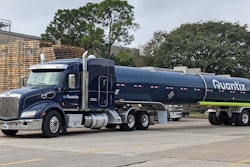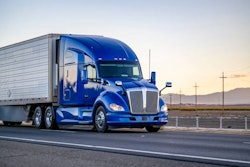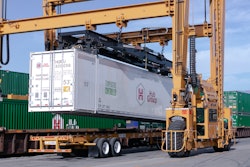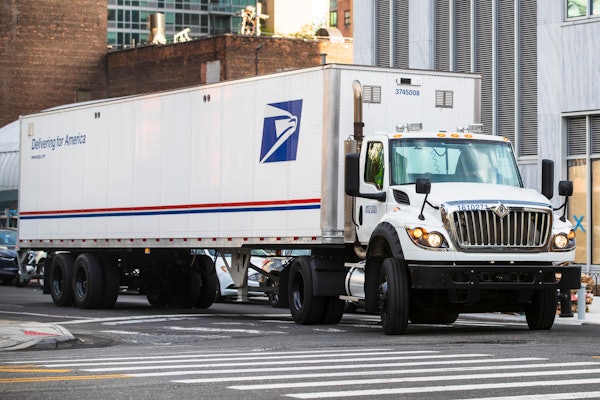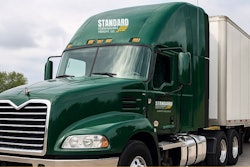The American Transportation Research Institute has released its annual Operational Costs of Trucking report looking at costs for 2024, which serves as a benchmarking tool for fleets for industry costs, key performance metrics and revenue.
It’s probably not surprising to most in trucking that all-in trucking costs were mostly flat in 2024 from 2023, falling by just 0.4% to $2.26 a mile. If you take the cost of fuel out of the equation, however, costs actually increased by 3.6% from 2023 to $1.78 a mile.
[Related: Cost per mile dips slightly thanks to fuel prices, truck and trailer payments soar]
Contents of this video
- 00:00 10-44 intro, Comparing trucking companies' operational costs in 2024 to 2023
- 00:48 Key findings from ATRI's operational costs of trucking report
- 02:59 Factors increasing trucking costs in 2024
- 04:12 Analysis of truck driver wages and benefits trends
- 06:00 The impact of driver turnover on fleet costs
- 07:06 Surprising increase in truck and trailer payment costs
- 08:17 Why trucking companies have such tight operating margins
- 10:18 A look at early-year 2025 trucking cost data
Matt Cole:
How are trucking companies operational costs in 2024 compared to 2023?
Jason Cannon:
Hey everybody, welcome back to CCJ's 10-44. I'm Jason Cannon and my cohost is Matt Cole. The American Transportation Research Institute has released its annual operational cost of trucking report, which looks at trucking costs for 2024. The report serves as a benchmarking tool for fleets for industry costs, key performance and revenue.
Matt Cole:
It's probably not surprising to most in trucking that all in trucking costs were mostly flat in 2024 from the previous year, falling by just 0.4% to 2 26 a mile. If you take the cost of fuel out of the equation, however, costs actually increased by 3.6% from 2023 to a dollar 78 a mile.
Alex Leslie:
ATRI's been doing our operational costs of trucking research for, gosh, it's almost been two decades now, and the goal of the research is really twofold. On the one hand, it's a benchmarking report for motor carriers to help understand your costs, your revenues, and your operations, and how those key performance metrics match up with your peers. But the sort of second dimension is to help provide a barometer of the state of the industry. Again, not only for trucking companies, but also for the shippers, the financeers, the insurers, all those other groups that we do business with in trucking. This report helps provide a real, again, a barometer really of the state of the industry. But our report does detail just how challenging and where those challenges really centered. So we saw in 2024 that costs went up by about 3.6% if you exclude fuel. So that reached a new record high of a dollar 78 basically per mile if you include fuel, that total was $2 and 26 cents per mile.
So that was actually a slight decrease for the fuel inclusive costs, but that's just because fuel was the single largest decreasing cost this year. We'd like to report both of those just because for a lot of carriers, fuel costs are mostly being offset by fuel surcharges, not entirely right, your deadhead mileage, you're still paying for that fuel and depending on different contracts. So we track both of those numbers, but the real story in terms of how costs hit us, I think really comes from that 3.6% and that's a little bit above inflation. Still during the same period we saw inflation was about 2.9%. So even though that rate of increase has come down, thankfully it's still a challenge, especially in a market where rates remain stagnant. On the rate side of things,
Jason Cannon:
While fuel brought overall costs down in 2024, there were several factors driving costs up.
Alex Leslie:
The single biggest increase in cost was truck and trailer payments. That includes basically every way that you could possibly procure an asset. So your leases, your outright upfront purchases, your payment installments, however it is that you pay for your trucks and your trailers. That went up by 8.3% to again another record high of 39 cents per mile, and that was particularly challenging. Of course, we had a lot of fleets, were still making acquisitions, replacing older trucks in their fleet, not expanding their fleets, but that cost center really hurt after that. Driver benefits is actually the next highest increase and that tracks with, we've seen medical inflation has been considerably higher over inflation in general. So that 4.8% increase, again was a challenge, not entirely unexpected. And then the third highest was insurance premiums, which went up by 3% in 2024 as well.
Matt Cole:
Alex mentioned driver compensation is on the rise, which includes both wages and benefits, but the 2024 increase wasn't as pronounced as it has been in recent years.
Alex Leslie:
What's really been interesting is watching driver wages over these last few years, right? As if you recall in 2021 and 2022, driver wages increased by over 10%, increased by over 15% in 2022, but then as that hot market began to cool down a little bit and the demand for drivers was not quite as acute, that percentage increase was about seven and a half in 2023. And then in 2024, this most recent year, it dropped down to a 2.4% increase. So again, that's below the rate of inflation. Actually, again, that's about half a percentage point below the rate of inflation. And when we ask carriers what their costs looked like just in the first quarter of 2025, that had dropped even a little bit more to under a percent increase. So we've seen that driver wage increase come back down, I shouldn't say come down, it's still increasing, but the rate of increase is much more within a standard level now than what it was during that hot period. As again, we've seen total driver employment begin to retract over these last couple of years, so it hasn't decreased yet. Driver wages are still keeping up, but that has been one really key area where at least some relief has been available to carriers. Though, like we just said, it was kind of offset the fact that driver benefits jumped up as much as they did
Jason Cannon:
Trucking's traditionally high turnover rate is also driving up costs related to driver wages.
Alex Leslie:
Driver turnover has been interesting because it hasn't really moved a ton in the last year. I think what we really see in this market is uncertainty on the part of carriers and on the part of drivers, you don't have those jobs where the pay is 15% higher like we did a couple of years ago maybe. And so turnover has fallen a bit from the highs that we saw a couple of years ago. That said, turnover is still super expensive, right? The amount of time that a fleet spends paying a driver during that additional training that fleets do and getting them ready for how to drive in your fleet, that cost really does add up and it's certainly one reason why we've seen retention bonuses continue to remain robust, and that was something that we really saw jump a lot over the last those couple years coming out of the pandemic and they've remained at similar levels.
Matt Cole:
Alex said that given the freight market dynamics of 2024, he was surprised to see truck and trailer payment costs increase as much as they did.
Alex Leslie:
I was surprised at just how high truck and trailer payment costs increased. The few trends we sort of saw coming and we predicted in last year's report, driver wages increasing at a lower rate. We knew that repair and maintenance costs were trending down. That was one of the areas where actually costs decreased by 2%. We knew that insurance costs were going up, but truck and trailer payment costs, we knew that in 2024 fleets were going to begin to decrease their fleet sizes. You might remember from our conversation last year that they were still growing their fleet sizes in 2023 even with that challenging market. And so I think some of those fleet growth acquisitions in 2023 were still on the balance books in 2024, so I think that's part of why that cost went up as much as it did, but still in such a challenging market where purchases on new trucks have definitely been declining, I was a bit surprised to see that percentage again at 8.3.
Jason Cannon:
Alex also noted that ATRI's report highlights how little margin trucking companies are operating on with some even operating into the negative.
Alex Leslie:
It's been such a challenging freight market to operate in. We've seen, again, even though these cost increases that I've just listed aren't huge for the most part, there's just so little margin for error right now in this market. If you look across the different sectors, average profit margins right now are a pittance at best, 1.9% in tankers, 0.1% operating margins in refrigerated 0.4 in flatbed, and we actually saw that on average truckload carriers were running a loss a little over 2%. So again, even though you might think, oh, costs only went up by a little bit or costs including fuel actually went down, there just was no give available. Fleets are already running just barely above costs right now, and so even the slightest increase is enough to put a fleet in the red right now, and that's something we're seeing. And I will just say one other thing that we track in this report are a lot of operating metrics, and when we look at those, we really do see the impact of those margins being squeezed right down to the bone. So for example, we've seen that a lot of fleets are parking their trucks, they're decreasing their fleet size by about 2% on average. We saw that a lot of fleets are increasing their ratio of drivers to non-driving employees, so that means they're letting go of folks in the back office to try to trim those costs. So again, we're seeing the impact on operations of just how height a market this is, and we're going to continue seeing that in 2025 if there isn't any kind of improvement in rates on the horizon. Unfortunately,
Matt Cole:
ATRI's report also asked fleets to provide their early year 2025 cost data to get a feel for how the year was starting out. Not surprisingly, it was more of the same from 2024.
Alex Leslie:
It's a lot of the same. Honestly, we're seeing pretty similar continuation of trends. So just as a few examples, the highest change that we saw in the first quarter of 25 was insurance premiums. Those are going to continue going up this year, so that was pretty much expected, and it's pretty consistent with what things looked like last year. Truck and trailer payment costs, again, they're looking to go up again this year, but probably at a lower rate than in 2024, still one of the higher ones, but at a bit lower rate benefits, again, still going up as well. A couple areas that maybe diverge, I already mentioned repair and maintenance costs being down in 2024. Our first quarter numbers show those actually up by a couple percentage points. Now, that can change a lot because repair and maintenance costs are partly based on things like weather and time of year, and so it's not unusual for us to see those maybe a bit higher at the start of the year, and especially if fleets are running fewer miles over the course of the year. If rates again, continue to remain low, that could flip back and be closer to zero or maybe even negative again. But that's probably the one area of repair and maintenance where the trend could change for next week.
Jason Cannon:
That's it for this week's 10-44. You can read more on ccjdigital.com. While you're there, sign up for our newsletter and stay up to date on the latest in trucking industry news and trends. If you have any questions or feedback, please let us know in the comments below. Don't forget to subscribe and hit the bell for notifications so you can catch us again next week.

